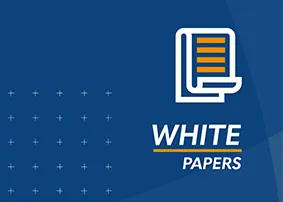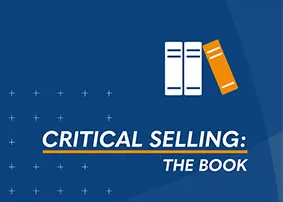Importance of Sales Forecasting

Imagine a company that consistently misses its revenue targets, struggles with cash flow and fails to capitalize on market opportunities. In many cases, the root cause of these issues can be traced to inaccurate or nonexistent sales forecasting.
One study found that companies with accurate sales forecasts are 10% more likely to grow their revenue year-over-year and 7.3% more likely to hit quotas. As companies navigate increasing uncertainty and competition, mastering the art of sales forecasting has never been more important for sustained success.
This article explores sales forecasting, its methods and challenges, and its importance in driving business success.
What Is Sales Forecasting?
Sales forecasting is the process of estimating future revenue over a specific period, such as a month, quarter or year. It involves analyzing market trends, historical sales data and other appropriate elements to predict how much revenue a company will generate in the future. The goal is to create a sales forecast that serves as a roadmap for decision-making and performance measurement.
A well-crafted sales forecast differs from a sales goal or target. While targets are aspirational goals management sets, forecasts are data-driven projections of future sales based on various inputs, including:
- Historical sales data and trends
- Sales pipeline and opportunity data
- Marketing and promotional activities
- Seasonal patterns and calendar events
- Market research and competitive analysis
- Economic indicators and industry benchmarks
Companies create sales forecasts from various time horizons, including:
- Short-term forecasts: These are the projected sales for a period of one to three months.
- Mid-term forecasts: These are forecasts for operational training, usually three to 12 months.
- Long-term forecasts: These are sales forecasts for strategic planning, typically one to five years.
Organizations often use sales forecasting tools to facilitate the forecasting process. These tools leverage data from the sales pipeline and historical sales to generate more accurate and efficient forecasts. Modern tools also incorporate artificial intelligence (AI) and machine learning (ML) algorithms to enhance predictive capabilities.
How Do You Forecast Sales?

Companies employ various sales forecasting techniques to predict future revenue. The optimal approach depends on factors like company size, industry, data availability and the complexity of the sales cycle. Generally, there are two main categories of sales forecasting methods — qualitative and quantitative.
Selecting the right combination of sales forecasting techniques depends on your unique business context. Many companies use a hybrid approach, combining qualitative and quantitative processes to create more robust and accurate forecasts.
Qualitative Sales Forecasting Techniques
Qualitative forecasting methods are subjective and based on expert opinions, intuition and judgment. They include the following:
- Sales force composite: This method involves aggregating individual sales rep forecasts.
- Jury of executive opinion: This method requires a consensus among company leaders.
- Delphi method: The Delphi method involves iterative forecasting by a panel of experts.
- Market research: The method uses surveys and focus groups to gauge customer intent.
Quantitative Sales Forecasting Techniques
In contrast, quantitative methods of sales forecasting rely on historical data and statistical analysis. Here are the eight main quantitative sales forecasting methods:
- Historical forecasting: This method projects future sales based on past trends, assuming that history will repeat itself. Analysts calculate the average sales growth rate over a specific period and apply that rate to current sales to project future performance. It works well for stable markets with consistent sales patterns.
- Time-series forecasting: Time-series forecasting analyzes sales data over time to identify seasonal patterns, cyclical trends and other time-based factors. Techniques include moving average, exponential smoothing and time-series decomposition.
- Opportunity stage forecasting: This approach, also known as pipeline forecasting, predicts revenue based on the likelihood of closing deals at different sales pipeline stages. It considers factors like deal size, probability and expected close date.
- Lead value forecasting: Lead value or lead-driven forecasting estimates revenue based on the number and quality of leads in the pipeline. This method assigns values to leads based on factors like source, demographics and behavior.
- Regression analysis forecasting: Regression analysis uses statistical models to identify relationships between sales and other variables, such as marketing spend, economic indicators or competitive activity. This technique helps quantify the impact of different factors on sales.
- Intuitive forecasting: Intuitive sales forecasting relies on the experience and judgment of sales managers or executives to adjust data-driven forecasts. It incorporates qualitative insights that may not be captured in historical data.
- Multivariable analysis: This method considers multiple factors simultaneously to predict sales, such as price, promotion, distribution and external market conditions. It provides a comprehensive view of the sales landscape.
- Length of sales cycle forecasting: The length of sales cycle forecasting analyzes the time it takes to convert a lead into a customer and factors this into revenue predictions. This technique helps set realistic expectations for when deals will close and revenue will be recognized.
Why Is Sales Forecasting So Important?

Accurate sales forecasting is critical for effective business planning and decision-making. It enables organizations to anticipate future revenue, allocate resources efficiently and adapt to changing market conditions. Here are some of the key reasons why sales forecasting is essential for driving business success:
Improved Budgeting and Resource Allocation
Sales forecasts provide a foundation for realistic budgets and effective resource allocation. By predicting future revenue, companies can make informed decisions about staffing levels, inventory purchases, marketing investments and other operational expenses. These well-calculated decisions ensure optimized resource utilization and prevent overspending or understanding.
With precise forecasting, organizations can allocate resources to the most promising opportunities and initiatives. By understanding which products, markets or customer segments are likely to drive the most growth, companies can prioritize investments accordingly. This targeted approach can maximize return on investment (ROI) and drive sustainable growth.
Enhanced Inventory Management
For product-based businesses, sales forecasting is critical for managing inventory levels and avoiding costly stockouts or overstocks. By anticipating customer demand, companies can ensure they have the right products in the correct quantities at the right time. They can optimize inventory turnover, reduce carrying costs and improve cash flow.
Effective inventory management, driven by accurate sales forecasts, can also help organizations respond more quickly to changes in market demand. Regularly monitoring sales data and updating forecasts allows businesses to adjust production schedules, procurement plans and inventory levels to meet evolving customer needs. This agility can be an essential competitive advantage in fast-moving markets.
Better Financial Planning and Investor Relations
Financial planning and forecasting rely heavily on sales forecasts to project cash flows, profitability and financial performance. A clear and credible picture of expected revenue informs the following:
- Short- and long-term financial plans
- Investment decisions and capital allocation strategies
- Pricing, discount and credit policies to optimize profitability
Expert sales forecasts enhance credibility and transparency with investors, leaders and other stakeholders. They demonstrate a deep understanding of the market and a proven ability to anticipate future performance, making it easier to secure funding, negotiate favorable terms and attract top talent.
More Effective Goal Setting and Performance Measurement
Sales forecasts provide a baseline for setting realistic and achievable projected sales and quotas. Aligning individual and team goals with company-wide revenue expectations ensures everyone works toward the same objectives. This clarity and alignment improve motivation, accountability and performance across the organization.
Forecasts also enable sales leaders to track progress and identify performance gaps in real time. Managers can spot underperforming areas and take corrective action by comparing actual results to forecasted targets. They can also recognize and reward top performers, reinforcing positive behaviors and driving a culture of excellence.
Proactive Strategic Planning and Decision-Making
Sales forecasts give companies a window into the future, enabling them to anticipate market trends, customer needs and competitive dynamics. Organizations that use forecasts to inform strategic planning can identify growth opportunities, assess the impact of different strategies and allocate resources to high-potential initiatives.
This forward-looking perspective is particularly valuable in a dynamic industry. Accurate sales forecasts empower companies to make proactive, data-driven decisions that help them stay ahead of the curve. They also facilitate the development of contingency plans to mitigate risks and adapt quickly to changing market conditions.
Increased Profitability and Competitive Advantage
Ultimately, the goal of any business is to maximize profitability and gain a competitive edge in the market. Sales forecasting contributes to these objectives by enabling data-driven decision-making and resource allocation.
Sales forecasting and ROI analysis can help optimize pricing strategies, promotional activities and product mix to maximize revenue and margin. By understanding the profitability of different products, customer segments and sales channels, companies can focus on the most profitable opportunities and make informed decisions about where to invest for growth.
In addition, sales forecasting can help identify market share gains and competitive threats. When organizations monitor competition activity and market trends, they can adjust their strategies and tactics to capitalize on opportunities or mitigate risks. The preemptive approach can also help companies stay ahead of the competition.
Avoiding Common Challenges in Sales Forecasting
While the benefits of sales forecasting are clear, companies often face challenges that can hinder the accuracy and effectiveness of their forecasting processes. Overcoming these obstacles is crucial for making informed decisions and driving business success.
Data Quality and Availability

One of the most common challenges in sales forecasting is ensuring the accuracy and completeness of data. Inaccurate, inconsistent or fragmented data can flaw forecasts and lead to poor decision-making.
To address this, organizations must ensure that sales data is accurately captured, integrated and accessible across the organization. They can ensure the reliability of sales forecasts through the following:
- Auditing data sources regularly
- Implementing data quality checks
- Providing training on data best practices
Additionally, organizations should invest in enterprise sales training programs that emphasize the importance of data quality and equip sales teams with the skills to maintain accurate and consistent data.
Market Volatility and External Factors
Market volatility and external factors beyond a company’s control can significantly impact sales forecasts. Economic fluctuations, competitive pressures, regulatory changes and other external events can disrupt even the most well-crafted forecasts.
Companies should incorporate scenario planning and sensitivity analysis into their sales forecasting and ROI analysis to mitigate this risk. By developing forecasts for different market conditions and assessing the potential impact of external factors, organizations can be better prepared to adapt to changing circumstances. Businesses should also train sales teams to monitor market trends and competitive activity, enabling them to identify potential risks or opportunities and adjust strategies accordingly.
Bias and Subjectivity
Personal biases, assumptions and subjective judgments can result in erroneous and inconsistent sales forecasts. Overreliance on intuition or experience rather than data-driven insights can lead to inaccurate predictions and poor decision-making.
Businesses should prioritize data-driven sales forecasting techniques and provide training on recognizing and mitigating cognitive biases. Encouraging collaboration and seeking input from multiple stakeholders can also help reduce bias and improve the objectivity of sales forecasts.
Complex Sales Cycles and New Markets
Forecasting can be challenging for companies with long, complex sales cycles or those entering new markets. Limited historical data, unfamiliar customer behaviors and unique market dynamics can make it difficult to predict future sales accurately.
To address this, organizations should regularly monitor and adjust forecasts based on actual performance and market feedback to improve accuracy over time. Collaborating with cross-functional teams, such as marketing and product development, can offer insights and help inform sales forecasts for new markets or products. Providing sales staff with targeted training on managing complex enterprise sales cycles and navigating new market entry can enhance their ability to generate accurate forecasts.
Technology and Artificial Intelligence in Sales Forecasting
As businesses increasingly rely on data-driven insights to inform decision-making, the role of technology in sales forecasting is more prominent. However, many organizations struggle to leverage these tools effectively due to outdated systems, poor integration or insufficient training.
Companies should invest in modern software incorporating machine learning and AI sales forecasting. These tools can automate data collection analysis and forecasting processes, reducing manual effort and improving accuracy. They should also invest in comprehensive enterprise sales training that covers data literacy, AI sales forecasting and the application of insights to real-world decision-making.
Elevate Your Sales Forecasting With Janek Performance Group
Accurate sales forecasting is a game-changer for organizations looking to make smart decisions, use resources wisely and quickly adapt to market changes. With the right sales training, your organization can overcome obstacles like market volatility and unlock the full potential of your sales data.
Janek Performance Group offers tailored enterprise sales training solutions that empower your team to master accurate sales forecasting. Our programs combine cutting-edge insights, proven best practices, and hands-on learning to help your sales staff develop the skills and confidence to generate reliable, actionable forecasts.
With a research-based and results-driven approach, we help companies drive measurable improvements in sales forecasting and revenue growth. Contact us today to learn more about our award-winning sales training solutions and drive your business forward.


- Account Planning (11)
- Awards (49)
- Client Testimonial (37)
- Personal Branding (19)
- Podcast (11)
- Research (70)
- Sales Career Development (87)
- Sales Coaching (156)
- Sales Consulting (137)
- Sales Culture (170)
- Sales Enablement (354)
- Sales Leadership (109)
- Sales Management (248)
- Sales Negotiation (16)
- Sales Prospecting (125)
- Sales Role-Playing (18)
- Sales Training (235)
- Selling Strategies (263)
- Soft Skills (70)
- Talent Management (94)
- Trusted Advisor (27)
- Virtual Selling (49)
- Webinar (9)























